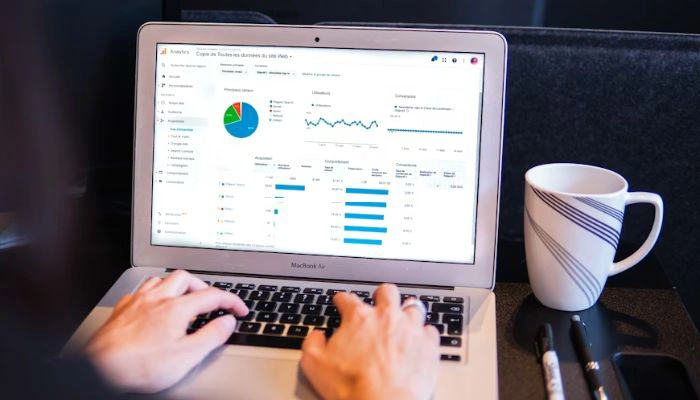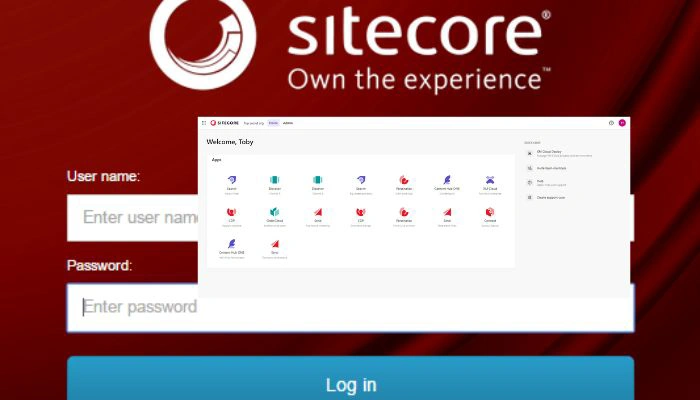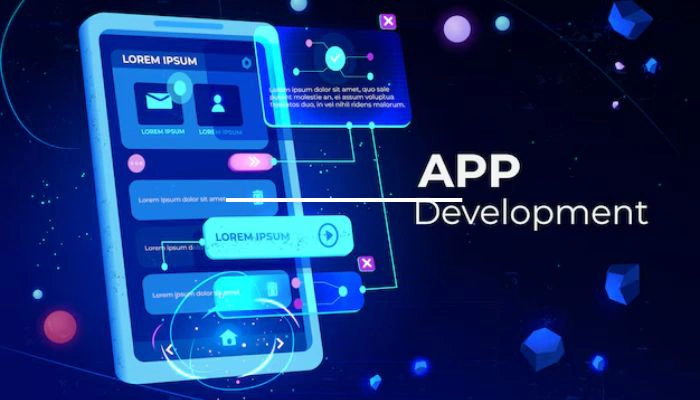
A captivating website is just the beginning! The true measure of online success often boils down to how effectively your website can turn casual visitors into loyal customers or valuable leads. This critical process hinges significantly on the performance of your landing pages. More than just a pretty face, a landing page is a focused, strategic asset designed with one primary goal: to guide visitors towards a specific action, whether it's making a purchase, signing up for a newsletter, or downloading a resource.
However, simply having a landing page isn't enough. Many businesses find themselves with traffic but without the desired results, a common frustration that points directly to the need for optimized landing page conversions. A low conversion rate means missed opportunities, wasted ad spend, and a slower path to achieving your business objectives. Understanding the intricacies of what makes a landing page truly effective is paramount for any digital marketing strategy aiming for real impact.
If you're looking to transform your website traffic into tangible outcomes and significantly boost your bottom line, then mastering the art of landing page optimization is non-negotiable. This comprehensive guide will delve into five proven strategies that will help you enhance your landing page conversions, ensuring your efforts translate into measurable success. Read on to unlock the secrets to creating high-performing landing pages that captivate, convince, and convert.
The Power of a Compelling Value Proposition: Boosting Your Landing Page Conversions
The first and arguably most crucial element in driving exceptional landing page conversions is a clear and compelling value proposition. Your value proposition isn't just a catchy slogan; it's the core promise of what your product or service offers, the unique benefit it provides, and why a visitor should choose you over the competition. Without a strong, easily understandable value proposition, even the most beautifully designed landing page will struggle to convert.

Imagine a visitor arriving on your page. They're likely in a hurry, bombarded with information from countless other sources. Your value proposition needs to cut through the noise, immediately answering the fundamental question: "What's in it for me?" It should articulate the specific problem you solve or the desire you fulfill, highlighting the unique benefits in a way that resonates with your target audience's pain points and aspirations.
Here’s how to craft a compelling value proposition to elevate your landing page conversions:
- Clarity is King: Avoid jargon, ambiguity, or vague statements. Your message should be crystal clear, allowing visitors to grasp your offering within seconds. Think concise, direct language that leaves no room for confusion.
- Focus on Benefits, Not Just Features: While features are important, people buy solutions to their problems or ways to improve their lives. Emphasize the positive outcomes and tangible advantages your product or service delivers. For example, instead of "Our software has advanced analytics," say "Gain actionable insights to double your sales."
- Highlight Your Unique Selling Proposition (USP): What makes you different? Why should they choose you instead of your competitors? Pinpoint what truly sets you apart and weave it into your value proposition. This could be superior customer service, innovative technology, or a unique pricing model.
- Keep it Above the Fold: Your value proposition, typically expressed through your headline and a concise sub-headline, should be immediately visible when a visitor lands on your page, without requiring them to scroll. This is their first impression, and it needs to be powerful.
By meticulously crafting a value proposition that is clear, benefit-oriented, and highlights your unique edge, you lay a solid foundation for impressive landing page conversions.
=> Explore our Company Marketing Solution Now!
1. Streamlining Your Design for Optimal Engagement
A cluttered, confusing, or slow-loading landing page is a surefire way to deter potential customers. In the quest for improved landing page conversions, a streamlined and user-friendly design is paramount. Think of your landing page as a guided path; every element should lead the visitor towards the desired conversion action, free from distractions and friction.
Here are key aspects of design optimization:
- Simplicity and Focus: A high-converting landing page has one primary goal. Remove all unnecessary elements that might divert attention. This means minimizing navigation menus, external links, and excessive visual clutter. Every image, piece of text, and button should serve the overarching conversion objective.
- Visual Hierarchy: Guide the visitor's eye naturally towards the most important elements. Use contrasting colors for your Call-to-Action (CTA) button to make it stand out. Employ larger fonts for headlines and subheadings to emphasize key messages. Strategic use of whitespace also helps to create visual breathing room and highlight critical information.
- High-Quality Visuals: Incorporate relevant, high-quality images or videos that complement your offer and resonate with your target audience. Visuals can communicate complex ideas quickly, evoke emotion, and build trust. Ensure they are optimized for web use to prevent slow loading times.
- Mobile Responsiveness: With a significant portion of web traffic originating from mobile devices, your landing page must be fully responsive. This means it should adapt seamlessly to various screen sizes and devices, offering a consistent and excellent user experience regardless of how it's accessed. Test its appearance and functionality on different mobile devices to guarantee a flawless experience.
| Element | Best Practice | Impact on Conversion Rate |
| Headline | Clear, benefit-driven, and concise | Grabs attention, sets expectations, boosts initial engagement |
| Call-to-Action (CTA) | Contrasting color, action-oriented, prominent placement | Directs user to desired action, reduces friction, increases clicks |
| Form Fields | Minimal, relevant, clear labels | Reduces abandonment, streamlines data collection |
| Page Load Speed | Under 3 seconds for optimal experience | Reduces bounce rate, improves user satisfaction and SEO |
| Visuals (Images/Video) | High-quality, relevant, optimized | Enhances understanding, builds trust, increases engagement |
2. Crafting Persuasive Copy that Converts
Beyond design, the words you choose on your landing page are instrumental in persuading visitors to take action. Effective copywriting for landing page conversions is about more than just describing your product; it's about connecting with your audience on an emotional level, addressing their pain points, and clearly articulating the value you offer.

Here's how to craft compelling copy:
- Speak to Your Audience's Pain Points and Desires: Understand what keeps your target audience up at night and what their aspirations are. Frame your copy around how your product or service solves their problems or helps them achieve their goals. Use their language, not corporate jargon.
- Focus on Benefits, Not Just Features (Again!): While we mentioned this for the value proposition, it bears repeating for the body copy. Every feature should be translated into a tangible benefit for the user. For instance, instead of "24/7 customer support," say "Get instant answers to your questions anytime, ensuring you're never stuck."
- Use Clear and Concise Language: Avoid lengthy paragraphs and complex sentences. Break up your content into easily digestible chunks using headings, subheadings, and bullet points. This enhances readability and allows visitors to quickly scan for the information they need.
- Incorporate Social Proof: People are more likely to trust a product or service if others have already found success with it. Include testimonials, customer reviews, case studies, or trust badges prominently on your landing page. This builds credibility and reduces anxiety for potential converters.
- Create a Sense of Urgency or Scarcity (Where Appropriate): Limited-time offers, countdown timers, or statements about limited stock can motivate visitors to act immediately. Use these tactics responsibly and authentically to avoid appearing manipulative.
Remember, every word on your landing page should be working towards encouraging a conversion. Test different variations of your copy to see what resonates most effectively with your audience.
3. Optimizing for Speed and Mobile Experience
In today's fast-paced digital world, patience is a rare commodity. If your landing page takes more than a few seconds to load, you're likely losing a significant portion of your potential landing page conversions. Page speed is not just a technicality; it's a critical user experience factor that directly impacts bounce rates and, consequently, your conversion performance.
Furthermore, with the exponential growth of mobile internet usage, ensuring your landing page provides an exceptional mobile experience is no longer optional – it's essential. Google prioritizes mobile-first indexing, meaning your mobile site's performance heavily influences your overall search ranking.
Here's how to optimize for speed and mobile:
Compress Images and Videos: Large, unoptimized media files are often the biggest culprits for slow loading times. Use image compression tools and consider using modern image formats like WebP. For videos, embed them from platforms like YouTube or Vimeo rather than hosting them directly.
Minimize Code (CSS, JavaScript, HTML): "Minifying" your code involves removing unnecessary characters and spaces from your files without changing their functionality. This reduces file sizes and speeds up loading.
Leverage Browser Caching: Caching stores parts of your website on a visitor's browser after their first visit. This means that when they return, the page loads much faster, as many elements are already saved locally.
Utilize a Content Delivery Network (CDN): A CDN stores copies of your website content on servers located in various geographical locations. When a user requests your page, the content is delivered from the server closest to them, significantly reducing latency and improving load times.
Responsive Design is a Must: As mentioned earlier, your landing page must automatically adjust its layout and content to fit any screen size, from desktops to smartphones and tablets. This ensures readability and usability across all devices.
Large, Tappable Buttons for Mobile: On mobile, small or closely spaced buttons are frustrating to interact with. Ensure your CTA buttons are large enough and have sufficient padding to be easily tapped with a thumb.
Short Forms for Mobile: Typing on mobile can be cumbersome. Keep your forms as short as possible, asking only for essential information. Consider multi-step forms if you need more data, breaking down the process into smaller, manageable chunks.
By prioritizing a blazing-fast load time and a seamless mobile experience, you significantly reduce friction for your visitors, paving the way for higher landing page conversions.
4. Implementing A/B Testing for Continuous Improvement
Optimizing landing page conversions is not a one-time task; it's an ongoing process of experimentation, analysis, and refinement. The most successful landing pages are those that are constantly being tested and improved. A/B testing, also known as split testing, is a powerful methodology that allows you to compare two versions of a landing page (A and B) to see which one performs better.

The beauty of A/B testing lies in its ability to provide data-driven insights. Instead of guessing what might improve your conversion rate, you can systematically test different elements and let your audience's behavior guide your decisions.
Here's how to effectively use A/B testing:
- Identify One Element to Test at a Time: To accurately determine what impacts your landing page conversions, focus on testing one variable at a time. This could be your headline, CTA button color, image, form length, or even the placement of a testimonial.
- Formulate a Hypothesis: Before you run a test, have a clear idea of what you expect to happen. For example, "Changing the CTA button color from blue to orange will increase clicks by 10%."
- Create Two Versions: Develop your original landing page (control) and a modified version (variant) with only the single element changed.
- Split Your Traffic: Direct a portion of your traffic to the control version and another portion to the variant version. Ensure the traffic split is random and statistically significant for reliable results.
- Measure and Analyze Results: Use analytics tools to track key metrics like conversion rate, bounce rate, and time on page for both versions. Once you have enough data, analyze which version performed better.
- Implement the Winner: If your variant significantly outperforms the control, implement it as your new standard. If not, discard the variant or refine your hypothesis and test again.
- Continuously Test: The process doesn't stop after one successful test. There's always room for improvement. Keep testing different elements to incrementally boost your landing page conversions over time.
By embracing a culture of continuous A/B testing, you gain invaluable insights into your audience's preferences and behaviors, allowing you to systematically optimize your landing pages for maximum effectiveness and consistent improvements in your landing page conversions.
Conclusion
Improving your landing page conversions is a multifaceted endeavor that combines compelling messaging, user-centric design, persuasive copywriting, technical optimization, and relentless experimentation. By focusing on a clear value proposition, streamlining your design, crafting engaging copy, ensuring lightning-fast load times and mobile responsiveness, consistently leveraging A/B testing, and strategically incorporating trust signals and optimal CTA placement, you can transform your landing pages from mere web pages into powerful conversion engines. Implement these strategies, analyze your results, and iterate to unlock the full potential of your digital marketing efforts. Ready to see your conversion rates soar? Contact us today for expert landing page optimization and other business marketing services tailored to your needs!



